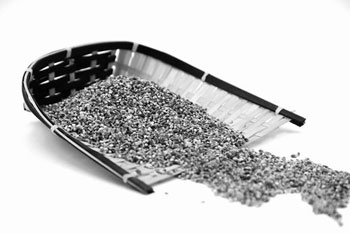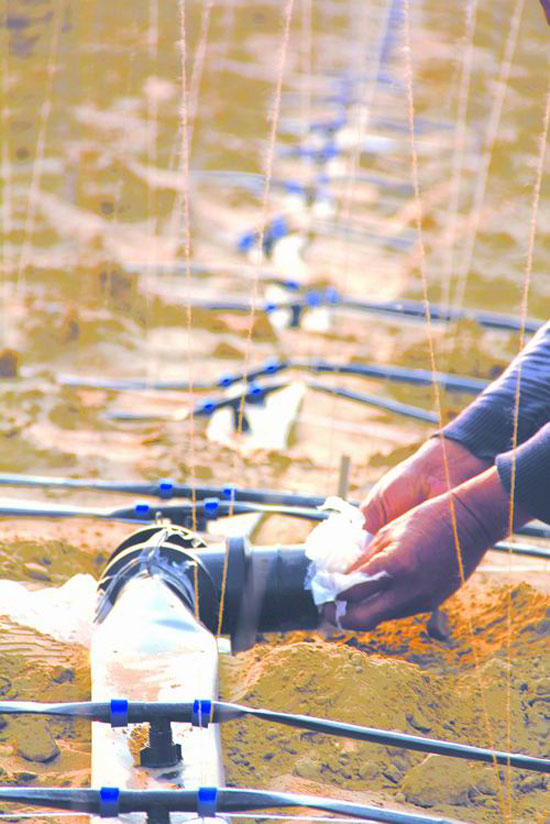The introduction technology of Russian rye "overwintering" in Northeast China was successful.
Original title: Rye "overwintering" in Northeast China

rye
Rye in the wheat field. Image Source: Baidu Image
Every winter, general crops cannot withstand severe cold weather and cannot grow in the northeast and northwest of China, which makes winter farming severely restricted.
In order to open up a way for crops to "overwinter" in China, for many years, the Academy of Agricultural Sciences of Baicheng City, Jilin Province, China and the Northeast Regional Agricultural Research Institute of Russian Academy of Agricultural Sciences in Kirov, Russia have carried out long-term cooperation to jointly carry out breeding and cultivation technology research of winter rye.
It is reported that Baicheng City Academy of Agricultural Sciences introduced winter rye with cold resistance, drought resistance and barren resistance from Russia. After more than 10 years of dedicated research, various planting techniques have been mastered at present. The successful overwintering of winter rye on alkaline soil in Baicheng has become an important scientific research achievement in the field of agricultural research in China, which provides a brand-new choice for agricultural planting structure adjustment in Jilin Province and even in high latitude areas of China.
"After mastering this planting technology, it is basically possible to achieve safe 'overwintering' in Baicheng area, and demonstration planting can be carried out." Guo Laichun, vice president of Baicheng City Academy of Agricultural Sciences in Jilin Province, said in an interview with China Science Daily.
The importance of winter rye
Worldwide, winter rye is inferior to wheat, rice and maize when compared with different cereal crops that can be eaten. But in some countries of northern and central Europe, winter rye plays an important role.
For example, under the special geographical conditions of Russia, winter rye is the second largest food crop after wheat, occupying a very important dominant position, with strong adaptability and stable yield.
Cereals are an important factor in ensuring food security for any country. Rye production is particularly important because it is necessary to produce 1 ton of grain per person per year (for bread, milk, meat products, seed, reserves and exports) in order to ensure a normal life for Russians.
It is understood that rye is a special crop mainly planted in the northwest of the Eastern Hemisphere, divided into winter and spring, these years Baicheng City Academy of Agricultural Sciences experimental demonstration for winter rye.
At present, the main countries producing rye in the world are Russia, Poland, Germany, Belarus and Ukraine, which produce 90% of the world's rye production and are also the staple food of their populations.
"Winter rye has a high nutritional value. Our common Russian specialties, such as black leba bread and kvass drinks, are all made from winter rye." Guo Laichun called winter rye a "very valuable crop."
At present, winter rye has been identified as a strategic crop by Russia, which shows its particularity and importance.
overcome technical difficulties
Rye is a cultivated crop belonging to the genus Secale of Gramineae. The plant consists of roots, stems, ears and leaves. It is a cross-pollinated plant.
In fact, winter rye is not demanding of farming conditions and can grow in poor soils (such as sandy loam, even muddy and heavy loam). Rye is better adapted to acid soil or saline conditions than other grains. Of course, it grows better in fertile, air-rich soil that is simply mechanically tilled.
Winter rye has stronger cold resistance than common winter wheat. It can tiller at-20℃, but it shows dormancy at lower temperature. "At present, the winter rye introduced in cooperation with Russia can withstand low temperature up to-21℃, which has strong cold resistance, which is an advantage that other crops do not have." Wang Chunlong, deputy director of Oatmeal Institute of Baicheng City Academy of Agricultural Sciences, said in an interview with China Science News.
This is one of the main reasons why they introduced winter rye.
"From the beginning, I just wanted to try." Guo Laichun said that when introducing this variety, through a little exploration, combined with the actual soil and climate conditions in northeast China to carry out relevant technical research, such as how to cultivate, when to sow, later density, fertilizer dosage, etc.,"now basically can master the complete technology."
Guo Laichun introduced that when introducing a new crop, it is necessary to carry out variety adaptability experiment, and compare several varieties, from growth, field performance to final yield situation, to carry out in-depth understanding of this variety.
Sun Xiaochen, a technician who has been engaged in field management work in Baicheng City Academy of Agricultural Sciences, used "really not easy" to describe the planting of winter rye in China when interviewed by reporters from China Science Daily.
In Sun Xiaochen's view, there is a very difficult link, that is, before freezing, must cover a layer of "quilt" on the crop point, let the air, cold separation, make the wind erosion impervious. "In this way, they can basically survive the entire winter. When spring comes the next year, as the temperature and humidity rise, they will naturally germinate."
He participated in the whole process of winter rye from sowing to harvest."It is a bold attempt to realize complete 'overwintering' of field grain crops under such low temperature conditions in winter in Northeast China, and at the same time fill the gap."
In addition, due to its developed roots, rye can absorb sufficient water from the soil in spring to reduce the impact of drought during its growth.
According to Wang Chunlong, due to drought and little rain in Baicheng area, less snow in winter, low snow coverage on the surface, and the surface temperature far below the low temperature limit of winter rye "overwintering" growth, they screened out 5 rye varieties suitable for planting in Baicheng area.
Among them, two new varieties which can "overwinter" in Baicheng City have been successfully bred through many years of "overwinter" domestication and screening tests on the original introduced varieties Falianji 4 and Weiyate 2, and the supporting cultivation techniques have been studied. Sowing in the middle of September every year, developing to 3~5 tillers before freezing at the end of October, returning to green from the end of March to the beginning of April of the next year, entering heading stage in early June, harvesting in the middle and late July, with a yield of more than 4500 kg/ha.
huge development prospects
Nature has endowed winter rye with many excellent qualities: it has a high edible value and a wide variety of uses.
At present, the economic value of winter rye has many aspects, such as food processing with winter rye as raw material. The rye food produced could reduce the risk of wealthy people in modern society, such as diabetes, hypertension, hyperlipidemia, obesity and so on.
"Nordic countries generally have a dietary habit of eating rye. At present, more and more Nordic people suffer from affluence disease. They conclude that they consume less rye food than before, so many Nordic countries and countries such as Japan in Asia have begun to pay attention to rye food again." Wang Chunlong said.
It is understood that the countries with large imports of rye are: Japan, Bulgaria, Lithuania, Poland, Finland, Norway, etc.
Related
- A course of planting techniques and methods on how to grow carrots
- How to plant the latest tulips?
- Is it better to pick tea in the morning or in the afternoon? When is the best time for tea to be picked? what is the third or fifth tea?
- Launch Yuanxiao Happy combination Haocha + Tea Yuan healthy Taste
- Penghu Tourism "Fireworks 20 Parade with You"
- 2022 West Lake Happiness holds "Digital Revitalization Voucher" and draws iphone13 and laptop.
- Banqiao Fuzhou social houses are designed to change start-up combined with police elimination to create a safe and livable environment
- The convenient measure of "mechanical weeding" in Xinbei has been abused and the Agriculture Bureau has imposed heavy penalties on the illegal land consolidation.
- Changgeng University Joins Hands with Four Memory Factories to Rescue Memory Talent Shortage
- The list of Taiwan's top 100 MVP managers is listed by the Director-General of the Farmers' Association of Sanxia District.



